Radio Frequency Identification (RFID) technology has emerged as a transformative asset across diverse industries, offering capabilities such as real-time tracking, automated data acquisition, and streamlined operational processes. RFID systems, comprising tags, readers, and integrated backend systems, facilitate wireless communication, enabling the continuous monitoring and precise identification of objects, livestock, and equipment. Its versatility has led to widespread adoption across numerous sectors, notably within agriculture.
In light of escalating global food demands and persistent environmental challenges, technological innovation is paramount for the advancement of modern agricultural practices. Farmers are increasingly leveraging cutting-edge technologies like RFID to enhance productivity, optimize resource allocation, and foster sustainable farming methodologies. The incorporation of RFID technology into agricultural workflows aligns with the overarching trend of precision agriculture, where data-driven insights inform more judicious decision-making.
RFID is revolutionizing farm management through the automation of critical tasks, including livestock monitoring, crop surveillance, equipment oversight, and supply chain visibility. This not only improves operational effectiveness but also contributes to waste reduction, improved animal welfare standards, and enhanced overall output. By delivering real-time data and optimizing processes, RFID is instrumental in modernizing agriculture, ensuring that farms of all scales can operate more effectively in an increasingly competitive market environment.
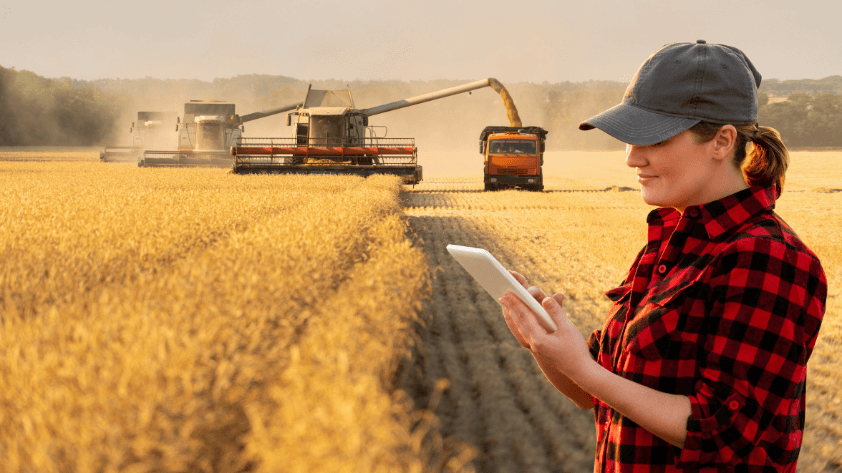
What Is RFID Technology?
Definition of RFID (Radio Frequency Identification)
Radio Frequency Identification (RFID) is a wireless technology designed for the automatic identification and tracking of items, animals, or individuals using radio waves. It involves RFID tags (for data storage), RFID readers (for remote data capture), and backend systems (for data processing). Unlike traditional barcode systems, RFID enables real-time asset tracking and management without requiring direct line-of-sight scanning.
While commonly used in inventory management and access control, RFID is increasingly applied in agriculture for monitoring livestock, crops, and farm equipment.
How RFID Works
An RFID system consists of several key components:
- RFID tags: Compact devices containing a microchip and antenna, attached to objects, animals, or equipment to store information.
- RFID readers: Devices that transmit radio signals to communicate with RFID tags and capture the transmitted data.
- Antennas: Components that facilitate communication between RFID tags and readers by transmitting and receiving radio waves.
- RFID backend systems: Systems that collect and process data from the reader, enabling efficient management and informed decision-making.
The process unfolds as follows:
An RFID reader emits a radio frequency signal via its antenna. When an RFID tag enters the reader’s range, it receives the signal and responds by transmitting its stored data. The reader captures this data and forwards it to the system software for analysis and utilization.
Different Types of RFID Tags
RFID tags are available in various configurations, tailored to specific applications and environments. The primary types include:
- Passive RFID tags: These tags lack an internal power source and derive energy from the RFID reader’s signal. They have a limited read range (typically centimeters to several meters) but are cost-effective and suitable for applications like livestock tagging.
- Active RFID tags: Equipped with an internal battery, these tags power their circuitry and transmissions, allowing for extended read ranges (up to 100 meters or more). They are ideal for tracking large farm equipment and enabling long-distance monitoring.
- Semi-passive RFID tags: These tags incorporate an internal battery to power the tag’s circuitry but still rely on the reader’s signal for communication. They offer a balance between passive and active tags in terms of range and cost.
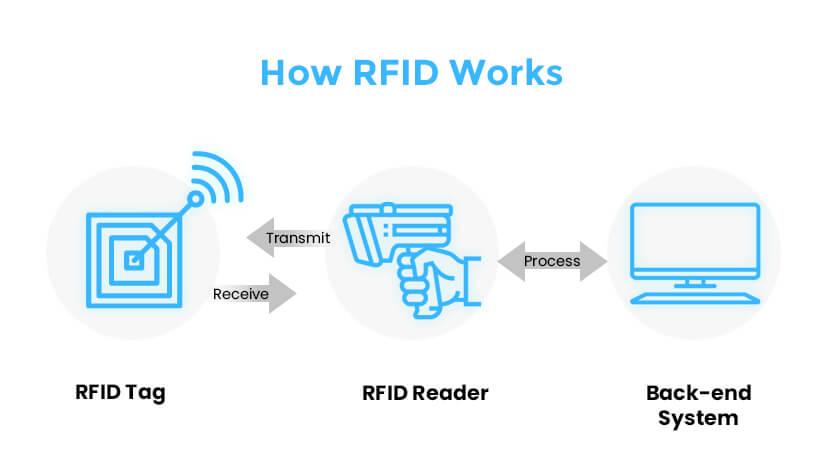
Passive RFID Tags of Different Frequencies
Passive RFID tags can be further categorized based on their operating frequency: low frequency, high frequency, and ultra-high frequency.
Low Frequency (LF) RFID Tags
Operating between 125 kHz and 134 kHz, LF RFID tags offer a short reading distance (typically less than 10 cm) and strong penetration capabilities, making them suitable for applications requiring close-range identification. They are less susceptible to interference from water and metal, making them ideal for complex agricultural environments.
Applications in Agriculture
- Livestock management: LF RFID tags are commonly embedded in animal ear tags for identification and tracking. Their strong penetration allows them to read tag data even when covered by animal skin, making them suitable for close-range reading and monitoring livestock health.
- Feed management: LF tags can be used to mark feed bags or troughs, enabling farm managers to track and manage feed distribution, ensuring accurate rationing.
High-Frequency (HF) RFID Tags
Operating at 13.56 MHz, HF RFID tags have a read distance ranging from a few centimeters to 1 meter and offer fast data transmission. While sensitive to interference from water and metal, they are widely used in agricultural applications requiring medium-range data reading.
Applications in Agriculture
- Greenhouse crop management: HF tags are used in smart greenhouses or vertical farms to monitor plant growth. They can store information such as plant species, planting dates, fertilization, and irrigation data, providing managers with easy access to detailed crop information.
- Agricultural product tracking: HF tags can label agricultural products, ensuring supply chain transparency from field to market and enhancing food safety and quality control.
Ultra-High Frequency (UHF) RFID Tags
Operating between 860 MHz and 960 MHz, UHF RFID tags offer a long read distance (up to several meters or more) and support batch reading and high-speed data transmission.
Applications in Agriculture
- Large-scale livestock and equipment tracking: UHF tags are used in large-scale livestock tracking systems on ranches. Farms can install fixed RFID readers to automatically record information when livestock enter or leave specific areas. UHF tags can also be installed on large agricultural equipment for long-distance tracking and theft prevention.
- Agricultural product supply chain management: UHF tags track agricultural products from farms to supermarkets, monitoring transportation, storage, and sales through long-distance data reading. They can read multiple item tags during bulk transportation, significantly improving efficiency.
- Granary and storage management: In granaries or large warehouses, UHF tags can remotely monitor grain storage conditions, helping farmers quickly count inventory, monitor environmental conditions, and ensure grain quality.
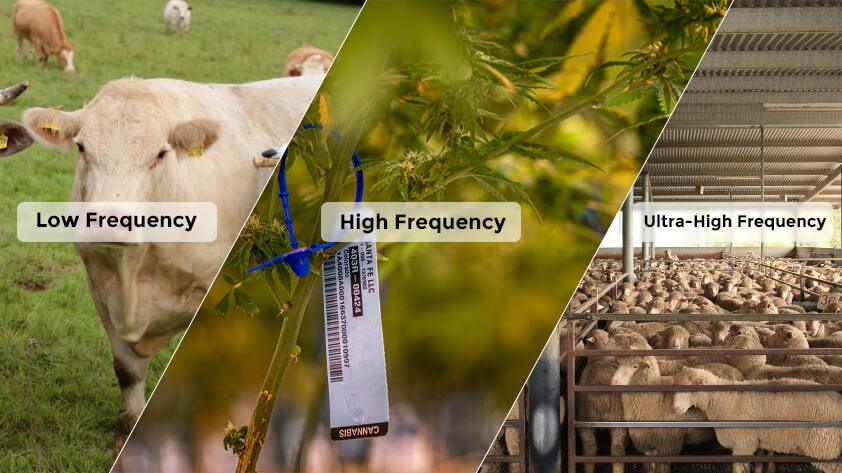
Common RFID Tag Types in Agriculture
- Livestock ear tags: Typically LF passive RFID tags embedded in the ear tags of cattle, sheep, and other livestock. Used to track animal movement, health data, and reproduction records to improve herd management efficiency.
- Livestock ingestion RFID tags: Tags that are swallowed by livestock and remain in the animal’s stomach. These tags ensure permanent identification for internal livestock tracking, especially on dairy farms.
- Grain and crop RFID tags: UHF passive tags are generally used and applied to grain silos or packaging to track the storage conditions, quality and distribution of grain. These tags help farmers monitor inventory and optimize crop storage and transportation logistics.
- RFID integrated sensors: Special RFID tags with integrated sensors that monitor environmental conditions like soil moisture, temperature, and humidity. They help farmers make data-driven decisions for crop management and resource optimization.
Key Applications of RFID in Agriculture
Livestock Management
RFID technology is extensively used in livestock management to track animals, including cattle, sheep, and pigs. By attaching RFID tags to each animal, farmers can easily monitor their activities and identify individuals within the herd. This tracking capability allows for effective monitoring of the animals’ health, reproduction, feeding schedules, and locations. The data collected through the RFID system helps farmers make informed decisions about breeding and feeding practices, thereby increasing productivity. Additionally, RFID aids in disease control and biosecurity, enabling the rapid identification and isolation of sick animals, which reduces the spread of disease within the herd.
Crop Monitoring and Management
In precision agriculture, RFID technology plays a key role in tracking crop growth and yield. Farmers can attach RFID tags to crops or use integrated RFID sensors in the soil to monitor environmental conditions like soil moisture and temperature. This real-time data helps farmers make timely decisions regarding irrigation and nutrient management. By applying RFID technology to irrigation systems, farmers can optimize water resource usage and minimize waste, achieving more sustainable agricultural practices. Furthermore, continuous monitoring of crop conditions supports better yield forecasting and crop management strategies.
Agricultural Equipment Tracking and Maintenance
RFID tags can be attached to various agricultural equipment to monitor their usage, locations, and maintenance schedules. This tracking capability helps farmers accurately record equipment utilization and ensure efficient use of machinery. By knowing the location of the equipment, farmers can prevent theft and unauthorized use. Additionally, RFID systems can send reminders for maintenance schedules, reducing downtime and improving operational efficiency. This proactive approach to maintenance can extend the lifespan of equipment and lower repair costs.
Supply Chain and Inventory Management
RFID technology significantly enhances supply chain and inventory management in agriculture. By tracking products from farm to market, farmers can ensure better traceability, enabling them to quickly respond to any issues that may arise. This traceability is crucial in reducing food waste, as it improves inventory control and monitors the freshness of products. Moreover, the integration of RFID with blockchain technology provides transparency in the food supply chain, allowing all stakeholders to access real-time data about the flow and status of products. This transparency enhances food safety and helps build consumer trust in agricultural products.
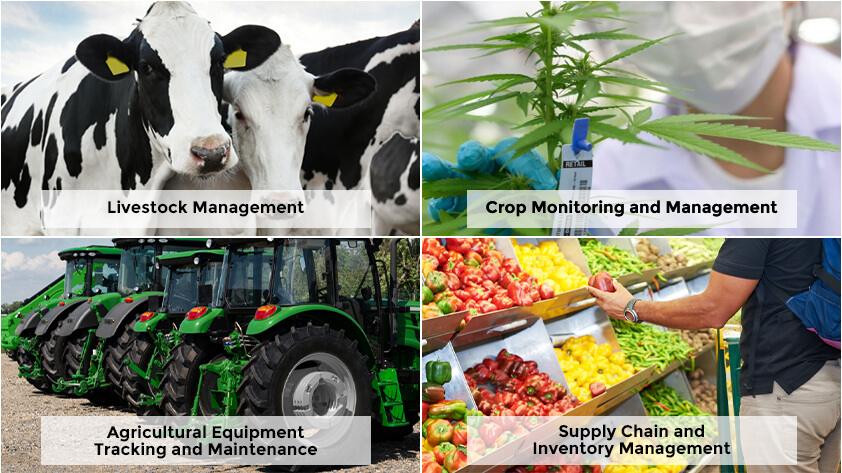
Benefits of RFID in Agriculture
Improve Efficiency
The application of RFID technology can automate the data collection process, reducing the need for manual data entry and minimizing human errors. For example, farmers can quickly scan livestock or crop tags with RFID readers to obtain the required information immediately. This automated process not only saves time but also enhances data accuracy, making farm management more efficient. Additionally, RFID systems can update information in real-time, ensuring that farmers are always informed of the latest status of agricultural activities.
Improve Livestock and Crop Health
RFID systems enable farmers to detect abnormal conditions promptly by monitoring the health of livestock and crops in real-time. For instance, RFID tags embedded in livestock can record physiological parameters (such as body temperature and heart rate) and compare them with health records to identify potential diseases. In crop management, RFID-integrated sensors can monitor soil moisture, temperature, and nutrients to provide accurate irrigation and fertilization recommendations. This real-time monitoring and data analysis can effectively improve the growth quality and health of livestock and crops.
Resource Optimization
RFID technology helps farmers manage water resources, fertilizers, and feed more effectively, optimizing resource usage. For example, by monitoring soil moisture in real-time, farmers can precisely adjust irrigation plans to avoid over-irrigation and save water. Additionally, RFID tags can track feed distribution, ensuring that livestock receive balanced nutrition and reducing feed waste. In this way, RFID not only enhances resource utilization but also supports sustainable agricultural practices.
Enhanced Traceability and Food Safety
RFID technology provides full traceability for agricultural products, ensuring that every link from production to consumption can be accurately recorded. This traceability helps farmers quickly locate the source of any issues when food safety problems arise and take timely action. Furthermore, the RFID system can automatically generate compliance reports to ensure that the farm meets food safety regulations. This not only enhances consumer trust but also protects the brand image.
Cost Savings
RFID technology can effectively reduce labor costs by decreasing reliance on human resources. Farmers no longer need a large workforce for data entry and inventory management, relying instead on automated systems to handle these tasks. Additionally, the use of RFID tags helps reduce the risk of equipment loss and theft, minimizing economic losses due to equipment disappearance. Overall, the implementation of RFID can not only improve production efficiency but also significantly lower operating costs in the long run, enhancing overall economic benefits.
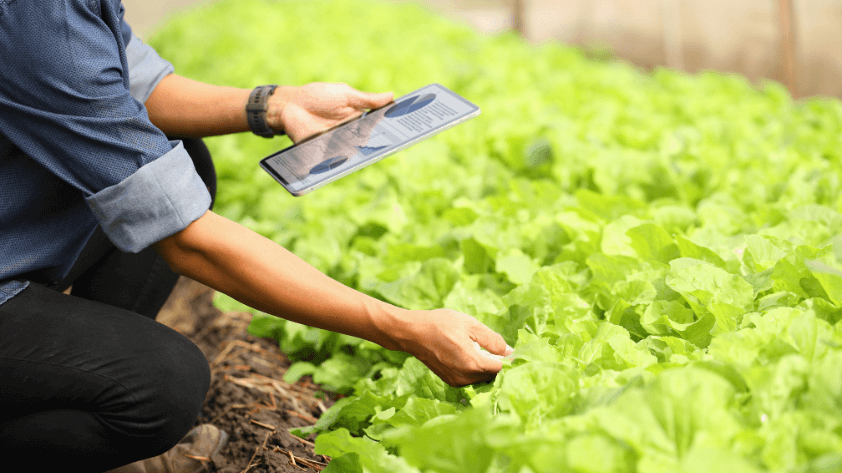
Challenges and Limitations of RFID in Agriculture
Implementation Costs
For small farms, the initial investment in an RFID system can be quite high. This includes the costs associated with purchasing and installing RFID tags, readers, software systems, and related infrastructure. While RFID can provide long-term cost savings and efficiency improvements, the steep initial investment may be unaffordable for small farmers, limiting the technology’s popularity and application.
Environmental Factors
Weather conditions can affect the performance of RFID systems. For instance, rain, humidity, and extreme temperatures may interfere with the transmission of RFID signals. Additionally, in certain specific environments, such as those with a lot of metal or liquid, the reading distance and accuracy of RFID may also be compromised. Therefore, farmers need to select the appropriate type of RFID tags based on environmental conditions to ensure the system’s effectiveness.
Data Management
RFID systems can generate a large amount of data that needs to be managed and analyzed effectively. Farmers must have the necessary data processing capabilities and tools to extract valuable information from this data. Managing and analyzing data requires not only expertise but also appropriate software support, which may pose a challenge for some small farms. Furthermore, issues related to data security and privacy need to be taken seriously to ensure that sensitive information does not get leaked.
Farmer Adoption
Farmers may be resistant to adopting RFID technology due to a lack of technical knowledge. Some farmers have limited understanding and application of new technologies, which may lead to a lack of awareness regarding the potential benefits of RFID systems. Additionally, the absence of training and education may prevent farmers from fully utilizing RFID systems. Therefore, the promotion of RFID technology needs to be accompanied by technical training and support for farmers.

Future Trends and Innovations in RFID for Agriculture
Integration with the Internet of Things (IoT), Drones, and Artificial Intelligence (AI)
As IoT technology rapidly develops, farmers will increasingly integrate RFID with IoT devices to create smarter agricultural management systems. They can use RFID tags alongside sensors and drones for real-time data collection and monitoring. Drones can fly over farmland, collecting data such as crop health and soil moisture, and transmit this information to farmers through the RFID system for comprehensive agricultural monitoring. Simultaneously, the application of artificial intelligence can analyze this data, providing farmers with more accurate decision support.
Application of Blockchain Technology in Supply Chain Traceability
The introduction of blockchain technology will further enhance the traceability of RFID in the agricultural supply chain. By combining RFID data with blockchain, farmers and consumers can view the source and circulation process of products in real-time, thereby ensuring food safety and transparency. This transparency not only helps to enhance consumer trust but also bolsters brand image. Additionally, when food safety incidents occur, the source of the problem can be quickly identified, allowing for timely intervention.
Advances in RFID in Automated Feeding and Irrigation Systems
Advancements in RFID technology will promote further development in agricultural automation. For example, by reading the RFID tags of livestock, automated feeding systems can accurately control the feed delivered, ensuring each animal receives the right amount of nutrition. In irrigation systems, RFID tags combined with sensors automatically adjust water levels and irrigation timing to meet the needs of different crops, improving water resource efficiency.
Application of Predictive Analytics in Livestock and Crop Health Management
By leveraging the vast amount of data collected by RFID, combined with predictive analytics technology, farmers are better equipped to manage the health of livestock and crops. By analyzing historical data, farmers can identify potential health issues and forecast future growth trends. This predictive capability enables farmers to take more proactive management measures, improving production efficiency and reducing losses. For instance, predictive analytics can help farmers implement preventive measures before pests and diseases emerge, ensuring the healthy growth of crops.
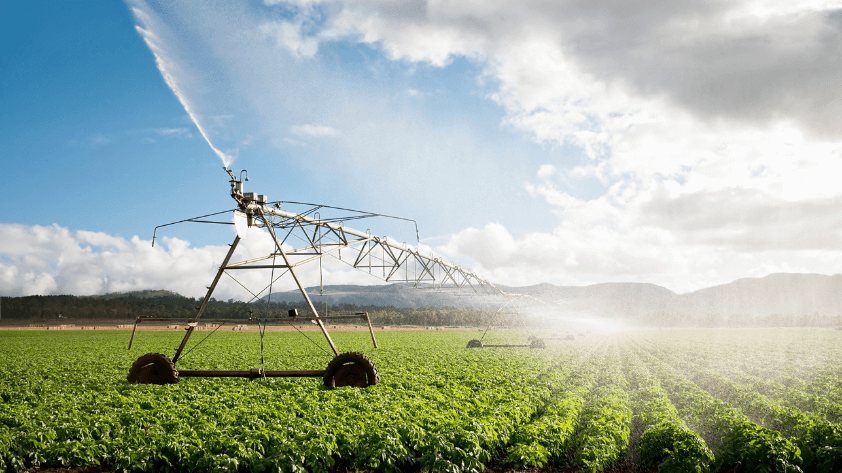
Case Studies of RFID Use in Agriculture
RFID Application in Large-Scale Livestock Farms
In large-scale livestock farms, RFID technology is widely used for animal tracking and health management. For instance, cattle farms can use RFID tags to identify each cow and monitor its health status, breeding cycle, and feeding records in real time. By installing RFID readers, farm managers can quickly obtain physiological parameters and activity data for each cow, which not only improves work efficiency but also makes disease control and prevention measures more timely and effective. Such applications significantly reduce the cost of manual monitoring and enhance the accuracy of livestock management.
RFID Precision Agriculture in Vineyards or Grain Farms
In vineyards and grain farms, RFID technology is utilized to achieve precision agriculture. Taking vineyards as an example, farmers can install RFID tags on each grape vine and connect them to soil moisture sensors. By monitoring soil and climate conditions in real-time, farmers can accurately adjust irrigation and fertilization plans to optimize grape growing conditions and increase yields. Additionally, in grain farms, RFID tags are used to track the growth stages and yields of crops. By analyzing this data, farmers can develop scientific agricultural management strategies to maximize resource utilization and improve crop quality.
RFID Supply Chain Transparency in Organic Agriculture
In organic agriculture, RFID technology is employed to ensure transparency in the supply chain. Some organic farms achieve full tracking from production to consumption by attaching RFID tags to each batch of products. These tags record key data during the planting, picking, and transportation of each product, allowing consumers to view the source and quality information of the product in real-time. In this way, farms not only enhance the traceability of products but also build consumer trust in organic products. Simultaneously, the RFID system helps farms respond promptly to food safety incidents, ensuring that products consistently meet organic certification standards.

How to Implement RFID on Your Farm
1. Evaluate Whether RFID is Right for Your Farm
Before deciding to implement RFID technology, you need to conduct a comprehensive assessment of your farm to ensure the suitability of the technology. Here are some specific steps:
Farm Size and Type
Small farms may face high initial investment issues, so you need to analyze whether RFID can bring significant efficiency improvements and cost savings. For medium-sized and large farms, the benefits of RFID are generally more pronounced, especially in livestock management and crop monitoring.
Consider the impact of farm type (such as orchard, grain farm, or livestock farm) on RFID application. For example, livestock farming requires real-time monitoring of animal health, while crop management focuses more on growing conditions and irrigation needs.
Existing Technical Infrastructure
Evaluate existing management systems and equipment, such as whether there is existing data management software, and whether there is sufficient network coverage and power support. RFID technology typically requires a good wireless network environment to ensure smooth data transmission. If the current technical infrastructure is not adequate, it may need to be upgraded or adjusted to support the new RFID system.
Specific Needs
Determine the specific needs of the farm in terms of management, tracking, monitoring, etc. For example, do you need to track the feeding and breeding cycles of livestock, or do you need to monitor the growth status and environmental conditions of crops? This will help clarify the specific application scenarios for RFID.
2. Choose the Right RFID System
To choose the right RFID system for different agricultural purposes, you need to consider the following factors:
Tag Type
Select the appropriate RFID tag. For instance, low-frequency (LF) tags are suitable for livestock management because they can effectively penetrate water and flesh; while high-frequency (HF) and ultra-high-frequency (UHF) tags are more suited for inventory management and crop monitoring due to their longer reading range and higher reading speed. Additionally, consider the durability and waterproofing of the tag to ensure it can function properly in various agricultural environments.
Reader Selection
Choose a suitable reader based on the type of RFID tag and the environment in which it will be used. For large areas of farmland, opt for a UHF reader with long-range reading capabilities to capture tag signals over a larger area. Additionally, ensure that the reader is durable enough to withstand dust, moisture, and shocks that may be encountered in agricultural settings.
Software System
Look for management software that can work seamlessly with RFID hardware. The software should support data collection, real-time monitoring, analysis, and report generation, and integrate smoothly with existing management systems, such as farm management software. Furthermore, it is essential to ensure that the software has a user-friendly interface that is easy for farmers to operate and understand.
3. Cost and Return on Investment (ROI) Considerations
When implementing RFID technology, a detailed analysis of the associated costs and return on investment is necessary:
Initial Investment
Calculate the total cost of hardware, including RFID tags, readers, installation, and software. Create a reasonable budget based on the size and needs of the farm. Also, consider possible additional expenses, such as technical support and maintenance costs.
Operational Costs
Assess the ongoing costs of maintaining the RFID system after implementation, including software updates, equipment maintenance, and data storage. Additionally, calculate the time and resources required to train employees, which should also be included in the overall cost assessment.
Expected Benefits
Evaluate the benefits of implementing RFID, such as improved efficiency, reduced labor costs, decreased resource waste, and enhanced product quality. This analysis can be conducted through simulations or pilot projects to collect preliminary data. It is also necessary to calculate the return on investment (ROI) by comparing productivity and costs before and after implementation. Consider long-term benefits, such as increased yields and reduced disease incidence.
4. Practical Tips for Successful RFID Implementation
Conduct a Pilot Project
Before full implementation, select a small area for pilot testing to evaluate the effectiveness and applicability of the RFID system in the actual environment. This helps identify potential problems and make necessary adjustments. Collect data and feedback from the pilot project to help make more comprehensive decisions.
Training and Education
Provide adequate training for employees to ensure that they understand the working principles and application value of RFID technology and are proficient in using the system and equipment. Regularly organize training updates to keep employees informed of the latest technology trends and system optimizations, improving their operational capabilities.
Continuous Monitoring and Optimization
After implementation, regularly monitor the operation of the RFID system, collect user feedback, evaluate the system’s performance, and make necessary adjustments and optimizations. You can also set up a dedicated team responsible for data analysis and system maintenance to ensure that the system always operates at its best.
Work with Technology Providers
Establish a partnership with a professional RFID technology provider to obtain technical support and services, ensuring smooth implementation and addressing possible issues. Technology providers can offer the latest industry trends and solutions to help farms better cope with future challenges.
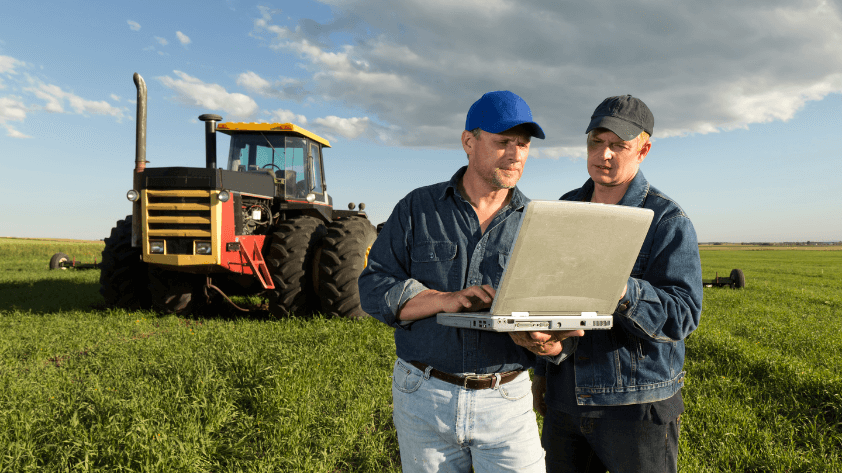
Conclusion
Currently, RFID technology is profoundly transforming the way agriculture is managed. By enhancing the automation and real-time nature of data collection, it helps farmers more effectively track livestock, monitor crop health, manage equipment, and optimize supply chains.
In the future, RFID will enhance the accuracy and efficiency of farm management by integrating with big data, cloud computing, and advanced analytical tools. At the same time, as consumers place greater emphasis on food safety and traceability, RFID technology will help enhance the transparency and trustworthiness of the agricultural supply chain. Driven by sustainable agricultural practices, RFID will not only optimize resource use but also provide strong support for achieving environmental protection goals.
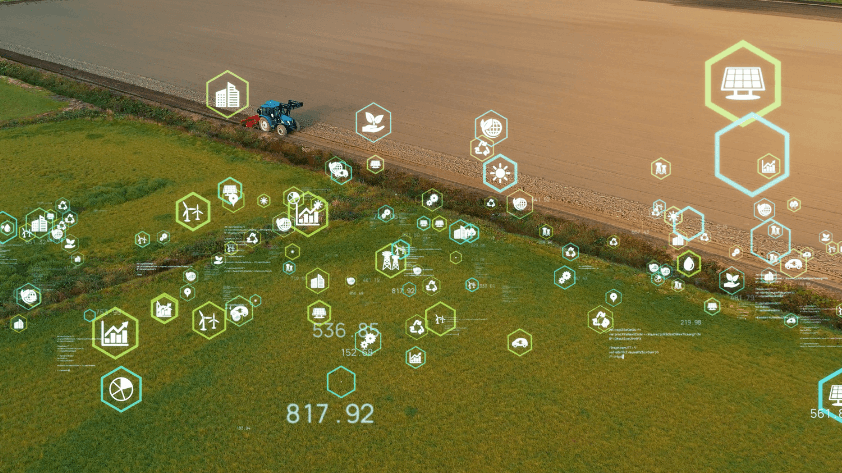
FAQs
1. What are the main applications of RFID technology in agriculture?
RFID technology has multiple applications in agriculture, including livestock management (such as tracking health and reproduction), crop monitoring (real-time tracking of growth status and environmental conditions), equipment tracking and maintenance (monitoring the use of agricultural machinery), and supply chain management (tracking the entire process of products from farm to market). These applications help improve efficiency, reduce costs, and ensure food safety.
2. What is the initial investment cost of an RFID system?
The initial investment cost of an RFID system varies depending on the size of the farm, the type of RFID tags and readers required, the software system, and the infrastructure. Small farms may face higher relative costs, but in the long run, RFID can achieve a return on investment through improved efficiency and reduced labor costs. Farmers should conduct a comprehensive cost-benefit analysis before implementation.
3. Is RFID technology suitable for all types of farms?
Although RFID technology has broad applicability, its suitability depends on the type, size, and specific needs of the farm. Large livestock farms and grain farms are generally more likely to benefit from RFID technology, while small farms may need to evaluate their return on investment. Farmers should evaluate their own situation to decide whether to adopt RFID technology.
4. How to choose the right RFID tags and readers?
When choosing the right RFID tags and readers, farmers need to consider several factors, including the type of tag (such as low frequency, high frequency, or ultra-high frequency), durability (such as waterproof, wear-resistant), and reading distance and speed. The choice of tags should match the application scenario. For example, livestock management may require low-frequency tags, while crop monitoring may be more suitable for ultra-high frequency tags. Readers should also be selected based on the layout of the farm and the use environment.
5. What challenges should be noted when implementing an RFID system?
When implementing an RFID system, farmers may face a variety of challenges, including high initial investment, the impact of environmental factors on RFID performance (such as humidity, temperature), the complexity of data management, and farmers’ technical acceptance. To overcome these challenges, farmers should conduct sufficient preliminary assessments, select appropriate technology partners, and provide employee training to ensure the successful implementation and continuous optimization of the system.

RFID Antenna UHF
15-Meter Cable for UHF RFID Fixed Reader
UHF Tag
4″x2″ 860-960MHz UHF RFID Label RFID M4D
UHF Tag
4″x4″UHF RFID Label Alien H3 | ISO18000-6C
RFID Antenna UHF
5-Meter Cable for UHF RFID Fixed Reader
HF Card
ABS RFID KEY-FOB Tag RFID Classic 1K
HF Card
ABS RFID KEY-FOB Tag RFID Classic 4K
HF Card
ABS RFID KEY-FOB Tag RFID Ultralight C
HF Tag
ABS RFID KEY-FOB Tag RFID Ultralight EV1
LF Card
ABS RFID KEY-FOB Tag ATA5577
LF Card
ABS RFID KEY-FOB Tag EM4200
HF Card
ABS RFID KEY-FOB Tag EM4305
HF Card
ABS RFID KEY-FOB Tag RFID TAG 213